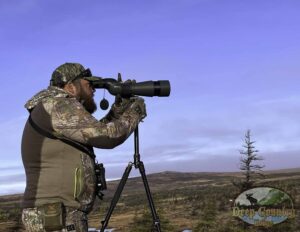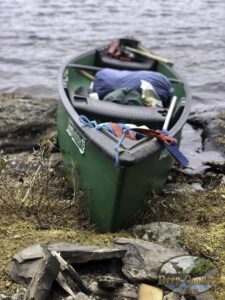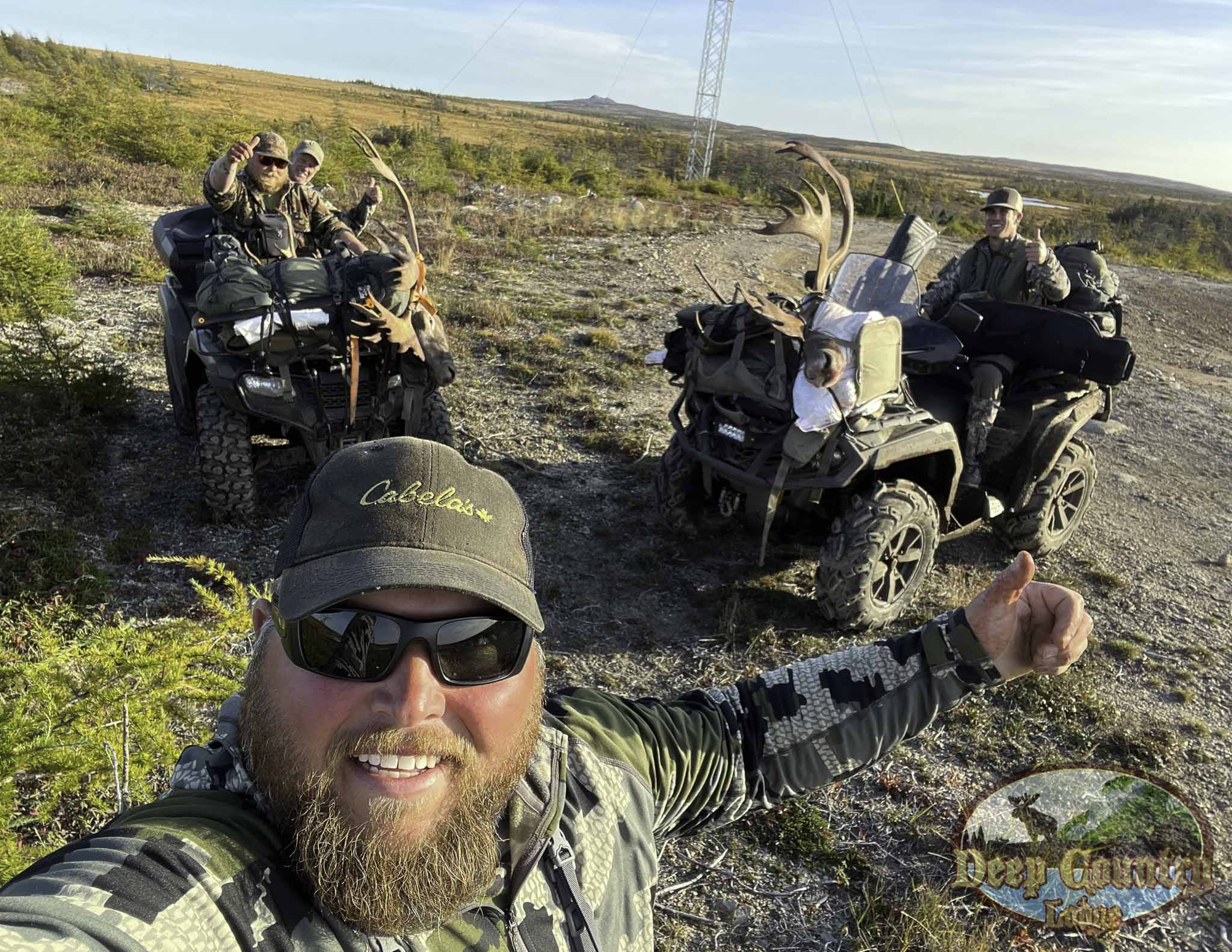Heading into the rugged wilderness of Newfoundland to pursue an Eastern Canadian Moose is an experience few hunts can match. The terrain is wild, the animals are massive, and the sense of adventure is unlike anywhere else in North America. But success in the field starts long before you arrive at camp. Preparation—mental, physical, and logistical—is key. Here’s how to make sure you’re ready for one of the most rewarding hunts of your life.
Know the Game: Understanding Eastern Canadian Moose
Eastern Canadian Moose are slightly smaller than their Alaskan cousins but are still one of the largest big game species in North America. Mature bulls can weigh over 1,200 pounds with antlers spreading up to 50 inches (60 plus inches do exist but rare. Deep Country Lodge has harvested 57 inch). Their behavior during the rut, which peaks in late September and early October, makes this the most exciting time to hunt. Bulls respond aggressively to calling, making it possible to draw them in for close encounters. Familiarize yourself with their vocalizations, movement patterns, and preferred habitats—typically lowlands, forest edges, and swampy basins.
Get in Hunting Shape
A Newfoundland moose hunt isn’t a sit-and-wait affair. You’ll be hiking through uneven terrain, bogs, and forested areas—often in damp, cool conditions. Elevation changes may not be extreme, but the ground is soft, wet, and often unpredictable. Start training at least 2–3 months in advance. Focus on cardio, leg strength, and endurance. Load up a weighted pack and practice hiking on trails that simulate the terrain. The better shape you’re in, the farther you’ll go—and the better your chances of reaching that once-in-a-lifetime bull.
Gear Up: The Right Equipment Matters
Your gear can make or break your hunt. For rifles, bring a well-practiced, reliable caliber such as .300 Win Mag, .30-06, or .338—something with power, range, and accuracy. Scope quality is just as important as your firearm, especially in low-light or misty conditions. Opt for waterproof, breathable clothing that allows for layering. The Newfoundland climate is variable; mornings can be below freezing while midday temperatures may rise. Waterproof boots are non-negotiable, as are gaiters or rubber boots for crossing boggy ground. A high-quality daypack, rangefinder, binoculars (10×42), and shooting sticks will give you the edge in the field. Bring extra gloves, dry socks, and hand warmers—you’ll thank yourself later.

Dial in Your Shooting
A clean, ethical shot is your responsibility. Newfoundland moose are large, and while they’re not particularly difficult to hit, they often appear in brushy, imperfect shooting conditions. Practice shooting from kneeling, seated, and prone positions. Become comfortable shooting out to 300 yards, as that can be a common range for moose in open clearings. Use the same ammunition you plan to hunt with and ensure your scope is zeroed (most site for 200 yards) specifically for your rifle/load combo. Consider practicing in rainy or windy weather if possible conditions you’ll likely face.
Prepare for the Pack-Out
At Deep Country Lodge, we take care of the heavy lifting, including animal retrieval and field dressing. Still, it’s worth preparing mentally for the process. A mature bull can yield over 500 pounds of meat, and depending on the terrain, quartering and extraction can take hours. We use ATV access where possible and field quarters game to preserve the highest quality meat. Bring a cooler or two if you plan to travel back with your harvest. We debone, package and freeze all meat with export permits to take meat with you when you fly home. You’ll also need a hunting knife, game bags, and possibly paracord or ratchet straps.
Paperwork, Tags, and Logistics
We help coordinate your licenses, tags, and accommodations, but it’s important to be aware of the requirements. You’ll need a valid Non-Resident Moose License, which we assist you in acquiring. You’ll also need a government-issued Firearms Declaration Form for bringing a firearm into Canada and tags are issued to Newfoundland Outfitter and guaranteed. Don’t forget your passport, and double-check airline regulations for traveling with firearms and ammunition. If you’re flying, we’ll coordinate your pick-up and transportation to camp from St. Johns International Airport.
Mental Preparation: Patience and Persistence
Moose hunting in Newfoundland is a mix of strategy and grit. You may cover several miles in a day, glass for hours, or sit and call for long stretches before a bull responds. It’s a man’s or woman’s hunt—one that rewards calm, patience, and experience. Stay mentally flexible and listen closely to your guide. The weather can turn quickly, but moose often move more in cooler, wet conditions. Some of the best hunting happens when most would call it a day.
responds. It’s a man’s or woman’s hunt—one that rewards calm, patience, and experience. Stay mentally flexible and listen closely to your guide. The weather can turn quickly, but moose often move more in cooler, wet conditions. Some of the best hunting happens when most would call it a day.
Timing Your Hunt
Prime rut takes place in late September through mid-October, when bulls are vocal, aggressive, and most susceptible to calling. Early-season hunts offer great weather and comfortable conditions. Later hunts into late October and early November may be colder but can yield better opportunities as bulls become more desperate and move more frequently during daylight. Booking early gives you access to peak season dates and your preferred zone.
The Deep Country Difference
When you book your moose hunt with us, you’re getting more than a tag—you’re getting access to exclusive zones with high game densities, expert guides with decades of experience, and a remote lodge designed for hunters like you. Our success rates and trophy quality speak for themselves. Whether it’s your first moose or the final species in your slam, we’re here to make it a hunt you’ll never forget.

